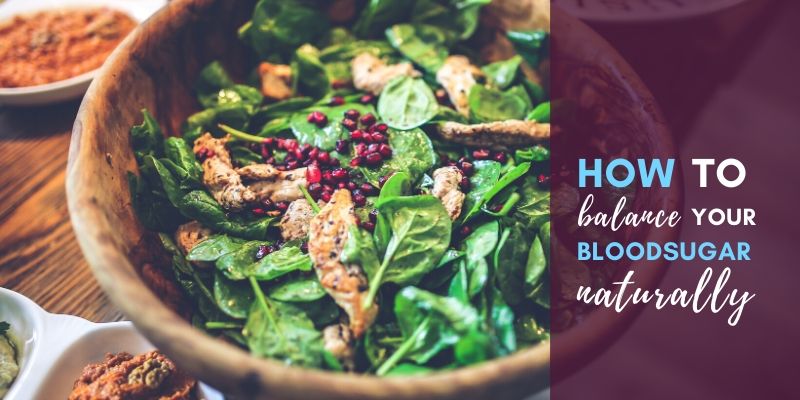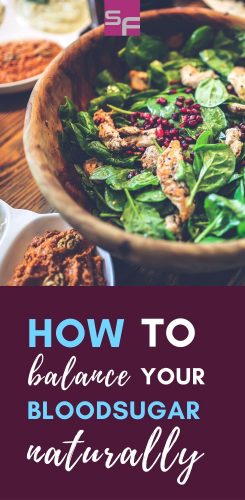
You might ask yourself why you would want to balance your blood sugar levels. There are many reasons for this ranging from weight gain, uncontrollable cravings, and increased risk of developing Diabetes. Balancing your blood sugar level is the key to weight loss, curbing your cravings, and overall optimal health.
Benefits of stable insulin and blood sugar
Maintaining regular insulin and blood sugar levels can have a significant effect on your overall health, including:
- Reduced food cravings
- Reduced fatigue
- Improved mood
- Increased energy levels
- Improved brain and blood vessel health
- Reduced risk of complications, such as nerve and kidney damage
What is insulin and what does it do?
Insulin is an important hormone that allows your body to turn sugar (glucose) into energy. This hormone keeps your blood sugar level from getting too high.
Blood sugar, or glucose, is the main sugar found in the blood. During digestion, food is broken down and its macro- and micronutrients are absorbed. Carbohydrates – foods such as rice, potatoes, bread, cereal, fruit, vegetables, and milk, are broken down into glucose and the blood sugar level in the body rises. This sugar is an important source of energy for the body’s organs, muscles, and nervous system.
However, without the hormone insulin, that is produced in the pancreas, the glucose cannot enter our bodies’ cells and used for energy. The insulin also sends any excess sugars to store in the liver. Insulin acts as the “key” to allow the sugar to enter your body’s cells for energy use.
Without insulin, your body cannot utilize the energy from sugar and your blood sugar levels remain elevated. If this condition persists, high blood sugar can cause damage to your blood vessels, nerves, and organs.
Understanding Macronutrients
Your body needs lean protein, quality carbs, healthy fats, and of course, fluids.
Protein is an important building block of bones, muscles, cartilage, skin, and blood. Your body uses it to build and repair tissue, make enzymes, hormones, and other body chemicals.
During digestion, your body is breaking down carbohydrates into glucose thus providing your body with easily accessible energy.
Our bodies need a good source of healthy fats to store energy, insulate us, and protect our vital organs. Fats also act as messengers, helping proteins do their job.
What are complex carbs and when to eat them
Carbohydrates are made up of three components: fiber, starch, and sugar.
Fiber and starch are complex carbs, while sugar is a simple carb. Depending on how much of each of these is found in any food determines its nutrient quality.
Sample of simple carbs
- Raw sugar
- Brown sugar
- Corn-syrup and high-fructose corn syrup
- Glucose, fructose, and sucrose
- Fruit juice concentrate
Complex carbohydrates are made up of sugar molecules that are strung together in long, complex chains. They also offer minerals, vitamins, and fiber that are important to the optimal health of the human body.
Samples of complex carbs:
- Beans
- Whole grains
- Peas
- Vegetables
Research on when to eat complex carbs is inconsistent. A few studies indicate that eating carbs before resistance training may help you perform better in your workout.
How to balance blood sugar naturally
1. Micronutrients
- Chromium picolinate
- Cinnamon
- Fish oil
- Fiber
- Protein
2. Exercise Regularly
Exercises can help you lose weight, lubricates your joints, enhances flexibility and strength. It also, however, increases insulin sensitivity, which means your cells are better able to utilize the available sugar in your bloodstream. Exercise also helps your muscles use blood sugar for energy.
3. Battling sugar and salty cravings
Cravings to eat or snack can seriously throw your diet off track. They are very hard to control, but as always, with enough knowledge, loading up on your essential nutrients and intuitive listening to what your body is trying to tell you, you can get on top of those nasty cravings.
Here are a few ideas for you on how to counter-act those cravings:
Craving something salty? Try kale chips! We found this great recipe here.
When it comes to sugar cravings, we have a few healthy options for you:
Try out your favourite smoothie, but be sure not to add any additional sugar (including honey, maple or agave syrup). You can also opt for a few pieces of 89% dark chocolate. Please use sparingly.
Have you tried any herbal bitters? No, not of the alcoholic kind. Sugar cravings are often disguised bitter cravings. Bitter foods are incredibly nutritious and contain a variety of plant-based components that are highly beneficial to our bodies.
Here is what you can include in your diet to give your body some of those bitter essentials:
- Cruciferous vegetables like arugula, kale, Brussels sprouts and cabbage
- Bitter melon
- Dandelion greens
- Dill
- Collards
- Mustard greens
- Endive
- Sesame seeds
- Cumin
- Dark chocolate
- Parsley
- Cilantro
- Red leaf lettuce
- Cranberries
- Black coffee
- Green tea
4. Don’t cut calories and don’t skip meals
Balance is key. Depending on your goal, cutting calories is likely not your priority at the moment. When it comes to balancing your blood sugar, it might be more important to level what is potentially causing those calorie guzzling cravings. Once the balance has been established (macronutrients and micronutrients ), you can re-assess your daily calorie goal. There are many nutrition plans out there that can help you achieve your goal. Once you are on a plan, stick to it and don’t skip meals. They are there to help you fill your body’s needs for vital nutrients. Going for a long time without fuel when you are trying to address imbalances is most likely counterproductive.
5. Increase whole fat
Some people associate all fat content with poor health. However, our bodies, especially organs need healthy fats to run optimally. Healthful or whole fats may be monounsaturated or polyunsaturated. Omega-3, a fatty acid abundant in oily fish, is one example.
Try to stay away from trans and saturated fats as they increase levels of harmful cholesterol in the blood. By including more healthful fats in your diet you may lower harmful cholesterol levels and help your body with increased blood sugar control.
Food containing whole fats:
- Avocados
- Olive oil (cold-pressed or extra virgin)
- Nuts and seeds
- Oily fish
6. Include foods from the three macronutrients at every meal
When you have a healthy balance of protein (lean meat, fish, or plant-based protein), whole fats (see above), and complex carbohydrates (vegetables, whole grains) you are offering your body an excellent array of vital nutrients without causing a spike on blood sugar levels. When it comes to vegetables, aim for 5-10 servings per day.
7. Foods to avoid
The following foods can cause blood sugar and insulin levels to spike:
- Simple Starches as found in potatoes, white rice, and pasta
- Processed grains and baked goods as they often contain trans fats
- Breakfast cereals with added sugar
- Dried fruit (except if it contains no added sugar)
- French fries
- Low-fat dairy as the lack of whole fat content, which contains and carries a lot of the flavour, is replaced with sugar or sugar substitutes.
- Soda
- Refined sugar
8. Increase your fiber intake
When you consume fiber, it helps your body to slow down the carb digestion and sugar absorption, which in turn promotes a more steady increase in blood sugar levels.
The recommended daily intake of fiber is about 25 grams for women and 38 grams for men.
9. Stay hydrated
Water will help your body keep your blood sugar levels in check by flushing out excess sugar through the urine.
10. Control stress levels
Yes, we realize this is probably the most tricky secret to balance your blood sugar level of them all.
When we are stressed, hormones such as glucagon and cortisol are secreted, which cause blood sugar levels to rise. Research as shown that exercises, relaxation and meditation significantly reduced stress and lowered blood sugar levels. Exercises and relaxation methods can also correct insulin secretion problems in chronic diabetes.

Admittedly, this was a lot of information to absorb. By emphasizing protein at each meal and limiting your refined carb intake, you can step off the blood sugar roller coaster and outsmart food cravings that sabotage your progress.
If you are still unsure of how to include all these tips into your weekly meal plan head over to our nutrition section and check out Sugar-Free Nutrition Plan or let us help you with your very own nutritional plan, based on your goals and individual needs.
We at Success Fitness are not medical doctors. This article is meant as educational and inspirational about what you can do to balance your blood sugar levels naturally with exercise and nutrition. Should you have been diagnosed or suspect you have Diabetes, please consult with your doctor before you make any changes in your diet.
The information provided is not intended to be a substitute for professional medical advice, diagnosis, or treatment. Never disregard professional medical advice, or delay in seeking it, because of something you have read on this website. Never rely on the information on this website in place of seeking professional medical advice.